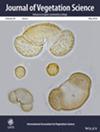Do Small Forest Gaps Collect Snow That Prevents Tree Gap Dynamics in Western North American High Latitude Conifer Forests?
Abstract
Question
What are the reasons that tree gap dynamics are little found in conifer boreal and subalpine forests in upland small forest gaps (1 to 1.5 gap diameter/tree heights (D/H))? Location: High latitude conifer forests in western Canada.
Methods
We use a sample of 480 from 2103 small gaps created 40 years ago for forest water management to increase snow and delay melt to assess if tree gap regeneration occurs. We then used two published studies: a ray-trace model of solar irradiance into gaps (Musselman et al. 2015) and a Gap Radiation Model (GaRM) (Seyednasrollah and Kumar 2014) to explain the net short and long wave radiation and snow accumulation and melting in small forest gaps, in large forest clearings, and in closed canopy forests.
Results/Discussion
We find that tree regeneration is rare in high latitude conifer forests because small gaps (1–1.5 diameter gap/tree height) accumulate deep snow that persists into spring and prevents regeneration of trees. Besides the shorter growing season, the cause may be several species of parasitic snow fungi since seed sources are nearby, adjacent conifer trees do not reach into gaps, and the forest floor is not the best for tree regeneration. Finally, the short return time of large lightning-caused crown fires sets the existence time of these small gaps.
Conclusion
Low net short wave radiation in gaps at latitudes greater than ~40° North leads to deep accumulation and slow melt in the spring of snow in these small gaps compared to closed canopy conifer forests or larger clearings. The result is little or no tree regeneration and thus little or no tree gap dynamics.


 求助内容:
求助内容: 应助结果提醒方式:
应助结果提醒方式:


